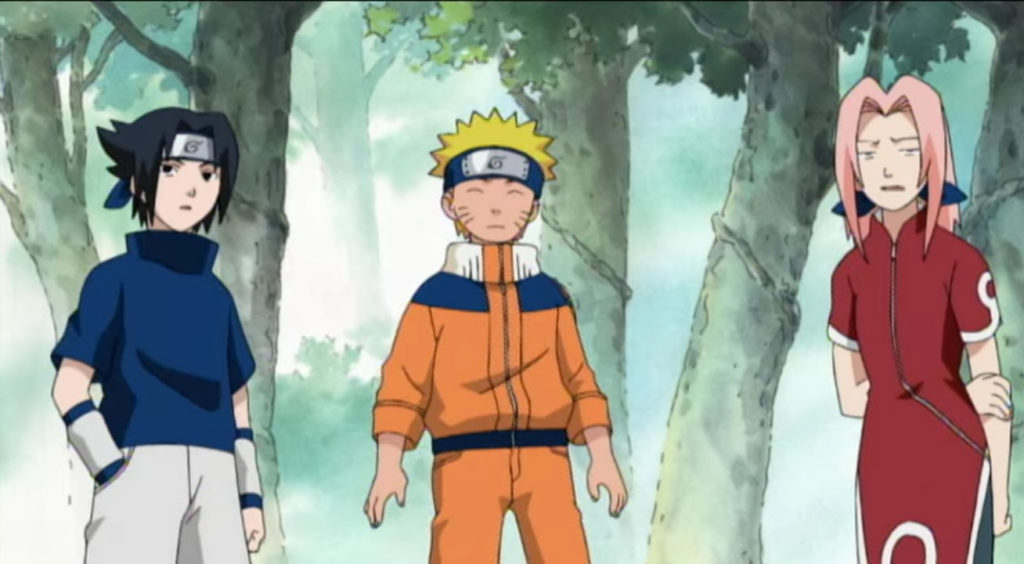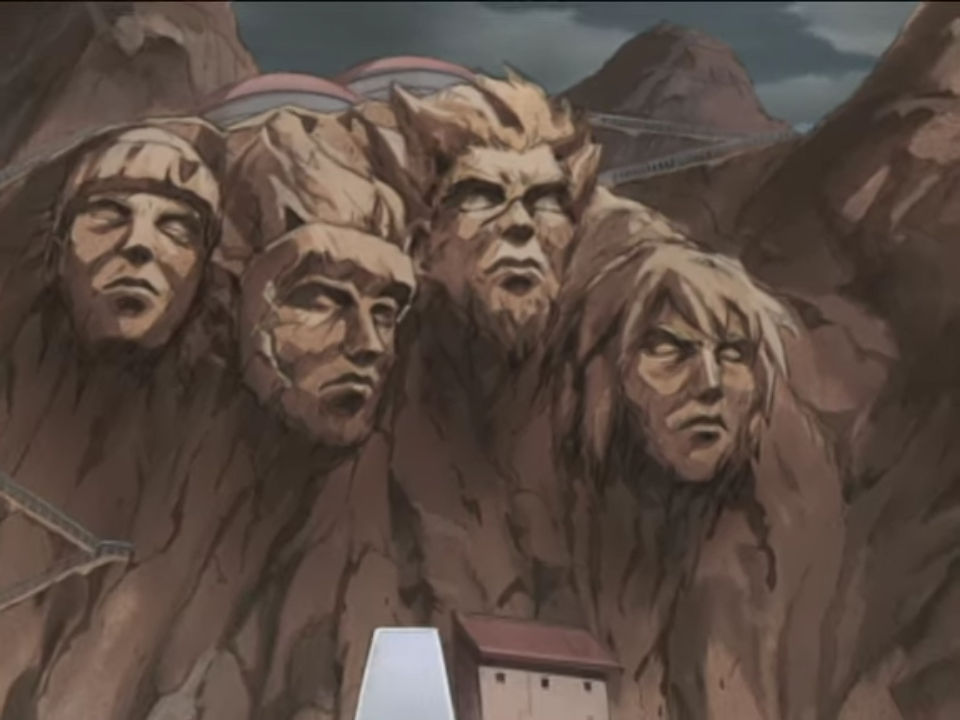Dear Naruto, “more” doesn’t mean “better”. Believe it!
by Bob Johnson

Sometimes you don’t want to eat anything special, just a big bowl of ramen. Maybe you pop in an extra pack because you have dozens laying around. Maybe one of those generic microwave pot stickers today, too. Maybe you bought a few too many and now you feel stuck eating the same thing every day. Welcome to Naruto, the endless soup and dumplings of anime. It’s not over (nor do I think it ever will be), but I can tell you my thoughts on the entire first series.
I don’t begrudge the folks who loved this show because it aired at just the right time in their lives. But I do see this for what it is, a middle-of-the-road long-running shonen. The gag comedy has been done before. The strategy and fighting has been done before. And it’s just so … generic and all-pervasive that it became its era’s definition of stereotypical anime, much like Pokémon or DBZ had been just a few years before. I might never have watched it without 2019’s avalanche of Yang Gang memes making me feel left out. Fortunately enough, Naruto seems to be at least a cut above its progenitors on the list of “I don’t really watch anime” anime.
When it comes to the show itself – well, there’s a big difference between wanting to be the strongest and actually being the strongest. For the entire series, the character of Naruto straddles the line between these two categories. Plainly irresponsible and inexperienced, his discipline level keeps him in the first bin. Yet if he had full control of his raw power, he could very well be in the second and achieve his dream of being village chief.
Even among ninja who walk on water and run-fly spread-armed through forest canopies as an animation cost-saving measure a basic chakra ability, Naruto is special. The power of the Nine Tailed Fox deep within him can grant him supercharged powers, which he uses almost as much for pranks as for training and fights.
Along for the ride is Sakura, his perpetual un-girlfriend who expresses herself primarily through skyward right hooks, and Sasuke, a too-cool-for-you ninja at the top of the class, who has little but contempt for Naruto’s silliness, or anyone else for that matter. They are assigned to a fighting team lead by Kakashi, a teacher and senior ninja.
Bound together in more of a rivalry than friendship, they take on jobs that need a surprising amount of strategy (and civil engineering!) until sinister agents upend the safety of their hometown, succinctly called “The Village Hidden In The Leaves”. Conveniently, this is exactly at the time of their final exams for ninja school. So naturally, as the protagonists in a kids’ anime show, they wipe the floor with the invaders and send them packing in a comedy gag?
You’d think so … except, no. This is when the kids get to grow up and deal with the real world. As much as it is about the title character’s antics, the show is also about an untold history, and from this point, as the tale unfolds we see the tapestry of prior generations unravel as Naruto learns their secrets.

But even as I admit that there’s more to this show than meets the Sharingan, I still have to take it down a peg. Older folks who remember the show fondly may find it’s not exactly small-tyke stuff when Naruto’s Sexy Jutsu or Jiraiya’s penchant for hotsprings pops up. All of that is baked into the modern streaming editions; the old TV edit isn’t particularly easy to find anymore.
And of course, this show is many things but it is not in a hurry. Naruto takes 40 episodes to “get good” – in that same amount of time, you could have watched 3 whole shows instead! The full run of 220 is positively languid, many of them just filling time. I’m not even complaining about the anime-original stuff versus the manga (a topic I’ll leave to the true believers), but how it pads things out with inner dialogue, fight windups, pointless gags, and recaps. Even today when you can click ahead and watch at accelerated speed, it can get annoying to deal with.

If you’ve already seen it, you know what’s up, and you know the parts that deserve a skip or a rewatch. But why would you ever watch this monstrosity if you hadn’t already? First, its cultural bigness can be considered a feature rather than a bug. Wearing a Naruto shirt can get you easy street cred far and wide, even on a hiking trail in the wilds of South Dakota. Fans of better anime need much better luck sporting their colours in the wild.
But perhaps more importantly, Naruto teaches life skills. This is a place where our heroes are always digging deep for that last bit of energy and doing their best to grow and improve. There’s immeasurable value in holding to that same stick-to-it-ive attitude in one’s own life.
Maybe Look It Up:
Naruto (2002) 220 episode series
based on the manga by Masashi Kishimoto
Produced by Pierrot, Licenced by Viz
